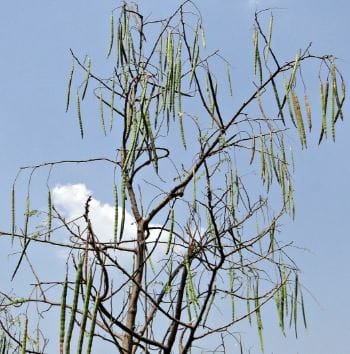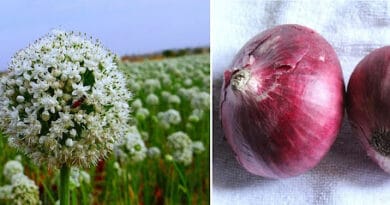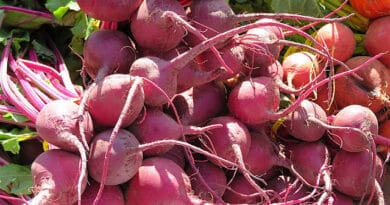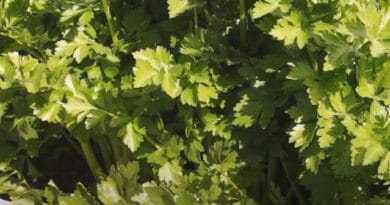Cultivation of Drumstick /Moringa ; The Tree of Life
Cultivation of Drumstick /Moringa: Every part of the drumstick tree has a very high nutritional value
Drumstick (Moringa pterygosperma), commonly known as moringa tree or horseradish tree. It is a versatile crop. It is grown as an annual and perennial vegetable in our country. Drumstick plants can withstand severe drought as well as mild frost conditions; that’s why they are widely cultivated across the world. Every part of the drumstick tree either has a very high nutritional value or is suitable for high commercial value; hence, it is also considered a Miracle Tree
The leaves of the drumstick are a rich source of several minerals, vitamins, and essential phytochemicals. The seeds of the drumstick plant are natural coagulants that are used in water treatment.
Its immature fruits, leaves, and flowers are used in culinary preparation. Its leaves, pounded with anardana and onion form a tasty chutney.
The leaves are rich in Vitamin A and Vitamin C and are considered useful in scurvy and catarrhal infection, and are also used as an emetic. Flowers are used as a tonic, diuretic, and cholagogue. Besides this, drumstick oil is used as a lubricant for fine machinery
Medicinal Properties of Drumstick Plant
| Plant Parts | Pharmacy uses |
| Seeds | Analgesic, antispasmodic, Diuretic, Larvicidal, Antibacterial |
| Seeds Kernel | Anti-asthmatic, Anti-inflammatory |
| Pods and Seeds | Hypersensitive |
| Leaves | Anti-ulcer, anti-hyperthyroidism, anti-diabetic, Anti-diabetic, hypolipidemic, Anti-helminthic, Anti-oxidant, hypocholesterolemic, and hepatoprotective. Antifungal, Antibacterial, antioxidant, Nutritional supplement, Antiatherosclerotic, Hypolipidemic |
| Roots | Analgesic and anticonvulsive, Antinociceptive, Anti-inflammatory, Anti-cancer, Anti-inflammatory, Antiurolithiatic |
| Flowers | Anti-arthritic |
| Bark | Antiurolithiatic |
| Foliage | Lactation enhancer |
Nutritive Value of Drumstick Plants:
Nutritive Value of Drumstick Plants
Moringa nutrition profile—drumstick pods and leaves, raw, values per 100 g. Percentages of daily recommended values are marked in brackets.
(Source: USDA National Nutrient Database)
| Principle | Nutrient value—Pods | Nutrient value -Leaves |
| Energy | 37 Kcal (2%) | 64 Kcal (3%) |
| Carbohydrates | 8.53 g (6.5%) | 8.28% (6%) |
| Protein | 2.10 g (4%) | 9.40 g (17%) |
| Total Fat | 0.20 g (1%) | 1.40% (7%) |
| Cholesterol | 0 mg (0%) | 0 mg (0%) |
| Dietary Fiber | 3.2 g (8%) | 2.0 g (5%) |
| Vitamins | ||
| Folates | 44 µg (11%) | 40 µg (10%) |
| Niacin | 0.680 mg (4%) | 2.220 mg (14%) |
| Pyridoxine | 0.120 mg (9%) | 1.200 mg (92%) |
| Riboflavin | 0.074 mg (6%) | 0.660 mg (51%) |
| Thiamin | 0.053 mg (4.5%) | 0.257 mg (21.5%) |
| Vitamin A | 74 IU (2.5%) | 7564 IU (252%) |
| Vitamin C | 141 mg (235%) | 51.7 mg (86%) |
| Electrolytes | ||
| Sodium | 42 mg (3%) | 9 mg (0.5%) |
| Potassium | 461 mg (10%) | 337 mg (7%) |
| Minerals | ||
| Calcium | 30 mg (3%) | 185 mg (18.5%) |
| Iron | 0.36 mg (4.5%) | 4.00 mg (50%) |
| Magnesium | 45 mg (11%) | 147 mg (37%) |
| Phosphorus | 50 mg (9%) | 112 mg (20%) |
| Selenium | 8.2 µg (15%) | 0.9 µg (1.5%) |
| Zinc | 0.45 mg (4%) | 0.60 mg (5%) |
Climate and soil requirements for drumstick cultivation:
1) Drumstick is a crop of dry arid regions; it gives good performance when the temperature lies between 25-35 degrees Celsius, but it can also tolerate higher temperatures under the shade
2) A pH range of 6.3 to 7 is ideal for its cultivation.
3) Drumsticks can be grown on any type of soil; however, they perform better in sandy loam soils rich in organic matter.
4) Highland is favorable for its cultivation. Waterlogging is detrimental to this crop.
5) Drumsticks are susceptible to frost.
6) Shedding of flowers occurs when the temperature goes beyond 40 degrees Celsius
Important Varieties of Drumsticks:
Variety | Characteristics |
KM-1 (Kudumianmalai 1) | It is a bushy variety propagated through seeds. Plants come to bear 6 months after planting and can be rationed for 2-3 years. Productivity: 400-500 fruits/year. Developed at Anna Pannai, Kudumianmalai of Pudukottai. |
PKM – 1 | PKM-1 is a “seed moringa”, propagated through seeds Developed at Horticultural Research Station, TNAU, Periyakulam. Plants grow to a height of 4-6 m and flower in 90-100 days after planting. The first harvest starts 160–170 days after planting On average, each tree bears 200-225 fruits per year. Pods are 65-70 cm long with 6.3 cm girth and 150 g weight. Fruits are green-coloured and highly pulpy |
PKM- 2 | This “seed moringa,” propagated through seeds, is also developed at the Horticultural Research Station, TNAU, Periyakulam. Pods are extra long (125-130 cm), pulpy, and suitable for homesteads. |
Dhanraj | This is also an annual drumstick propagated through seeds and is evolved at KRC College of agriculture, UAS, Arabhavi, Karnataka. |
Propagation of Drumstick;
The drumstick can be propagated by seeds or vegetatively by limb cutting. Vegetative propagation is generally followed.
It is propagated through limb cuttings of one to two meters long and about 15 to 20 cm in diameter. The cuttings are planted in a 60-cm cube at a spacing of about three to five meters, preferably from June to August.
The annual crop of drumsticks is propagated through seeds at 650 g per hectare. Sow the two seeds at a depth of 2 to 2.5 cm in polythene or pits, and after one month, they are transplanted to the main field.
Land Preparation for drumstick/moringa cultivation;
Thoroughly plough the field up to 3 to 4 times. Prepare the pits of 45x45x45 cms. At the spacing of 6X6 meters for the perennial crop and 2.5×2.5 meters for the annually grown crop, fill the pits with FYM @10 kg per pit
Manuring in Drumstick/Moringa Crop
Manuring of drumsticks is rarely practiced. The application of urea, superphosphate, and muriate of potassium at 100 gm each per plant gave a higher yield.
Aftercare in Drumstick/Moringa Crop
Gap filling should be done within 30 days of sowing. The tree basin may be cleared of weeds once a year, and slight hoeing of the soil under the trees will be beneficial. Irrigation may be given as and when needed. Pruning is beneficial for the new growth on which fruits will be produced in plenty.
Pruning should be done when the plant attains a height of up to 75 cm. Many short-duration crops like Okra, cowpea, and tomato can be grown as an intercrop
Harvesting of Drumstick/Moringa Crop
The fruits are harvested according to this crop’s demand before they become mature and fibrous.
An average yield of the crop is 45-50 tons/ha (200-225 pods/tree/year )
Read further:




